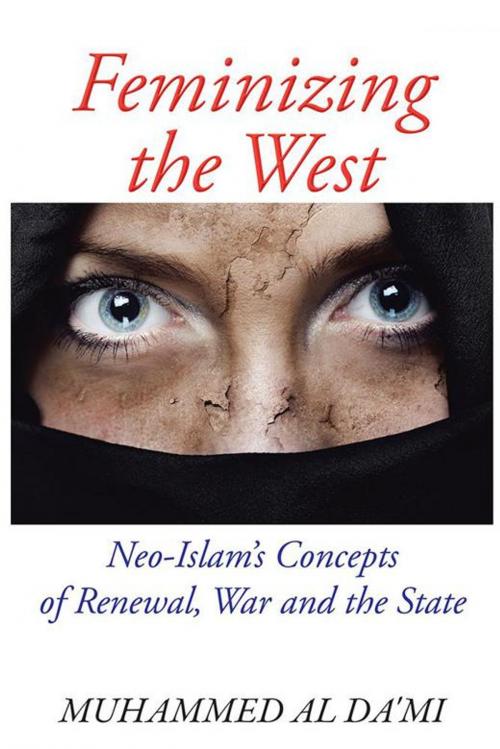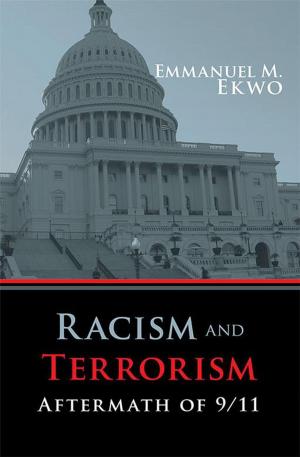Feminizing the West
Neo-Islam’S Concepts of Renewal, War and the State
Nonfiction, Religion & Spirituality, Middle East Religions, Islam| Author: | Muhammed Al Da'mi | ISBN: | 9781491865231 |
| Publisher: | AuthorHouse | Publication: | February 21, 2014 |
| Imprint: | AuthorHouse | Language: | English |
| Author: | Muhammed Al Da'mi |
| ISBN: | 9781491865231 |
| Publisher: | AuthorHouse |
| Publication: | February 21, 2014 |
| Imprint: | AuthorHouse |
| Language: | English |
This book utilizes the gender polemics of neo-Islams selective employment of a historical narrative which dwells disproportionately on the militant Islam of the post-immigration (hijra) period when the sword substituted the word for the spread of a spiritual faith. Given the fact that such neo-Islamists, like very many unlettered Muslims, mistake religion for history and vice versa, Al Dami justifiably hypothesizes that neo-Islam is not Islam. It is not the Islam of the God-fearing and virtuous mosque-goers as it propagates a cult of conflict, violence and hatred, rather than the faith of peace from which it derives its very Arabic name, salam. Neo-Islams theorists manufactured their own puritanical concepts of religious renewal, holy war and state-building in an endeavor to mobilize young zealots to restore power in the Islamic World to a reformed Islam through their form of government, better known as the caliphate, a government which had deteriorated, failed and, eventually, lost its historical state for fierce foreign foes due to proven flaws. To activate the above renovation program, the neo-Islamists retreated to history for Shii Islams opposition techniques and secret societies (such as those of the Brethren of Purity and the Order of the Assassins) for inspiration and expertise to fulfill their ancestral dream of building a global Islamic state in the future. As they adopted the masculine vs. feminine polemic, which was originally inspired by a desert low opinion of womanhood and by a post-colonial retrospective conception, the neo-Islamists proceeded on in an attempt to feminize the Western World. It is meant to reverse the discourse of the Industrial West which is conceived to have opportunely penetrated into a feminized, veiled Islamic World in times of passivity and frailty. To develop the above argument, Professor Al Dami explores various formulations of neo-Islam as those of the Wahabis, the Muslim Brothers and the later terror groups with a specific reference to their common principles and goals.
This book utilizes the gender polemics of neo-Islams selective employment of a historical narrative which dwells disproportionately on the militant Islam of the post-immigration (hijra) period when the sword substituted the word for the spread of a spiritual faith. Given the fact that such neo-Islamists, like very many unlettered Muslims, mistake religion for history and vice versa, Al Dami justifiably hypothesizes that neo-Islam is not Islam. It is not the Islam of the God-fearing and virtuous mosque-goers as it propagates a cult of conflict, violence and hatred, rather than the faith of peace from which it derives its very Arabic name, salam. Neo-Islams theorists manufactured their own puritanical concepts of religious renewal, holy war and state-building in an endeavor to mobilize young zealots to restore power in the Islamic World to a reformed Islam through their form of government, better known as the caliphate, a government which had deteriorated, failed and, eventually, lost its historical state for fierce foreign foes due to proven flaws. To activate the above renovation program, the neo-Islamists retreated to history for Shii Islams opposition techniques and secret societies (such as those of the Brethren of Purity and the Order of the Assassins) for inspiration and expertise to fulfill their ancestral dream of building a global Islamic state in the future. As they adopted the masculine vs. feminine polemic, which was originally inspired by a desert low opinion of womanhood and by a post-colonial retrospective conception, the neo-Islamists proceeded on in an attempt to feminize the Western World. It is meant to reverse the discourse of the Industrial West which is conceived to have opportunely penetrated into a feminized, veiled Islamic World in times of passivity and frailty. To develop the above argument, Professor Al Dami explores various formulations of neo-Islam as those of the Wahabis, the Muslim Brothers and the later terror groups with a specific reference to their common principles and goals.















